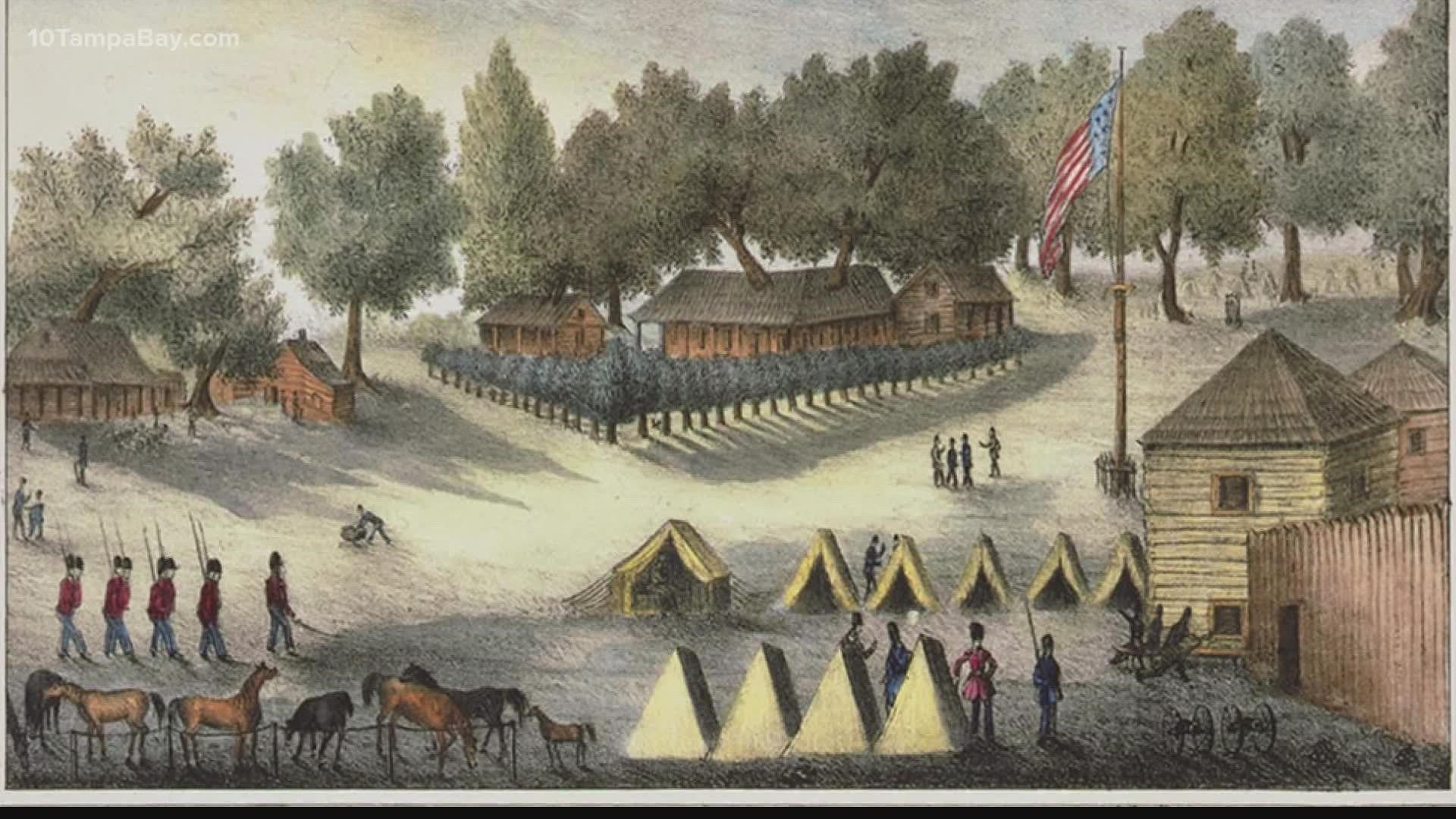TAMPA, Fla. — As people across the nation celebrate the legacy and heritage of Native Americans as part of Indigenous People's Day, the Seminole Tribe of Florida encourages people to recognize and honor the local history of Florida’s native people.
“We're not extinct...anywhere you turn there's Native American, indigenous people's lands all around you,” said Quenton Cypress, community engagement manager for the Seminole Tribe of Florida.
Cypress first spoke to 10 Tampa Bay in 2019 for a story on the history of Egmont Key. It’s a place where his ancestors were held captive before being shipped to Oklahoma. Historians say it was like a concentration camp.
"It's a mixture of different things that keep people from knowing that history,” said Cypress.
The history of the Seminole people being captured and forced from Florida has roots in downtown Tampa where the U.S. military post, Fort Brooke, was established in 1824. It was located in the area south of Whiting Street.
"Without this military center - that was placed there specifically to control the trade and try to drive away the Seminole people - Tampa wouldn't be there,” said Dave Scheidecker, research coordinator for the Seminole Tribe of Florida.
Rebecca O’Sullivan, an archaeologist for Cardno, says the history of Fort Brooke is dark for the Seminole Tribe, and the stories are not often told.
"Fort Brooke was also a place of removal for Seminole tribal members. It was a place that they were held at before they were forcibly removed from their lands to reservations in Oklahoma,” she said. “There's a very painful history that goes along with Fort Brooke, as well. That's part of the story and the history of Tampa."
The remnants of the past are still visible today. A few years ago, as construction was starting on Jeff Vinik's multi-billion-dollar Water Street Development, crews confirmed they found graves.
Experts say they're most likely from Fort Brooke's Estuary Cemetery, which held some U.S soldier remains and possibly the remains of Native Americans as well.
O’Sullivan said Fort Brooke had two main cemeteries, one of which was uncovered in 1980 during construction. She said that cemetery contained soldiers, settlers and Seminole tribal members.
“So, it's possible…the one that was located recently could be similar to that,” she said.
Cypress said it’s not uncommon for developers to come across indigenous remains during the construction of large projects across the state.
"If you understand that natives are still here, you can better help and keep an eye out on things like that…for giant constructions, you know, so that they're not built on top of Native American Graves,” he said. “But, you know, outside companies would do it anyway.”
Cypress said developers will contact the local tribes from the area, but there is often so much money already invested in the projects that the sites cannot be saved. “We shouldn't have to move our gravesites,” said Cypress.
So as Tampa grows and develops, the natives who were here first and those who support them are sending a reminder to honor and acknowledge what came before.
“It's important to know, to understand where we came from, but it's important to know the actual history as far as what happened,” said Scheidecker. “Not just the history that makes you feel good or proud; you need to know the whole entire story.”
Something Cypress says starts with awareness and an open mind.
"You know, it's important for everybody to know history,” said Cypress. “That way history doesn't repeat itself."

